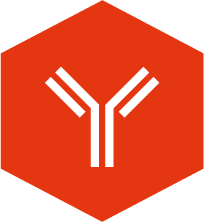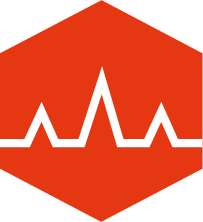High-throughput X-ray Crystallography And Gene-to-Structure Services
We offer a cutting-edge, high-throughput X-ray crystallography and gene-tostructure outsourcing services pipeline near the BioMax beamline, featuring state-of-the-art instrumentation, high-throughput data collection, and an exceptionally brilliant X-ray beam.
X-ray crystallography services with FastLane™ Structures
X-ray crystallography services at SARomics Biostructures are run at our cutting-edge, high-throughput pipeline anchored by our FastLane™ Premium and FastLane™ Standard off-the-shelf protein structure libraries. These top-tier libraries boast 500+ verified drug targets ready to be directly crystallized with your chosen ligand (FastLane™ Premium) or expressed, purified, and crystallized according to verified protocols (FastLane™ Standard) within a few weeks. Our X-ray crystallography and fragment-based drug discovery services platform benefits from the BioMax beamline, which uses an exceptionally brilliant X-ray beam from the fourth-generation 3 GeV storage ring at the MAX IV Laboratory. The beamline is equipped with state-of-the-art instrumentation for high-throughput data collection and automated data processing. You may watch a video presentation of the BioMax beamline on our methods and technology page.
Our team has extensive experience providing X-ray crystallography services to large pharmaceutical companies, biotech firms, and academic groups. Using X-ray crystallography and NMR spectroscopy, we have successfully determined thousands of drug target protein and protein-ligand complex structures, as well as therapeutic antibody and antibody-antigen complex structures. Our X-ray crystallography services have resulted in more than 500 disclosable structures deposited to the PDB. Our team’s exceptional expertise in protein crystallization and X-ray crystallography and our streamlined work process allow us to offer competitive prices. You can find many examples of our work in our publications, including a publication showcasing the use of X-ray crystallography in AI-based drug discovery at the bottom of this page.
The details of our FastLane™ Premium and FastLane™ Standard libraries of off-the-shelf drug-target proteins can be found on the next page. Below, you can also find the details of our services workflow. Please explore our Methods and Technologies Center to explore the details of our protein crystallization and protein crystallography technology services platform and discover the suggested structure-based drug discovery strategies.

Gene-to-structure services
Our comprehensive X-ray crystallography services pipeline includes gene-to-structure services. Below is an outline of the process.
- Cloning, expression, and purification of the protein
- Biophysical characterization: polydispersity assessment by dynamic light scattering (DLS), folding assessment by circular dichroism (CD) spectroscopy, stability assessment by differential scanning fluorimetry (DSF), and, if appropriate, additional assessments using protein NMR spectroscopy.
- Identifying crystallization conditions by screening thousands of conditions using crystallization robotics, crystal optimization, X-ray data collection, model building, and refinement.
Our protein crystallization technology page, part of our technology and methods center, offers more details on our services pipeline. If you have a project you’d like to discuss, please get in touch with us directly.
For examples of projects with our contribution, please visit our publications page.
MAX IV Synchrotron Radiation Facilities
X-ray Crystallography Services Workflow
Our X-ray crystallography services depend on thoroughly characterizing samples. Upon receiving the sample (or upon its arrival if sent by the client) and before crystallization and X-ray crystallography data collection, we analyze it to evaluate the stability of the protein in the solution. We utilize the differential scanning fluorimetry (DSF) method to determine the optimal conditions for the protein’s stability. Additionally, for further assessment, we may conduct size-exclusion chromatography (SEC), dynamic light scattering (DLS), or mass spectrometry (MS). Before crystallization trials, we might also conduct a DSF buffer screen to identify the most suitable buffer for crystallization.
Even if we know the crystallization conditions from previous studies, we often still need to set up crystallization screens to obtain good-quality crystals for X-ray crystallography data collection. We usually set up crystallization screens for proteins with unknown crystallization conditions and varying precipitants and concentrations, buffers, pH, temperature, etc. We typically use around 5 mg of protein at a concentration of approximately 10 mg/ml. However, we can start with smaller amounts or lower protein concentrations if the sample has solubility issues. Crystallization screens and potential crystallization condition optimization can take as little as 3 to 6 weeks, although more extended periods may be required depending on the protein.
Our X-ray crystallography services are leveraged by the BioMax beamline at the MAX IV synchrotron in Lund. X-ray diffraction data collection from well-diffracting crystals and subsequent structure determination of the protein-ligand complex are usually relatively quick. If a close homolog (generally above 40-50% sequence identity) with a known three-dimensional structure can be found in the Protein Data Bank (PDB), the molecular replacement method may be used for structure determination. In many cases, an AlphaFold model of the protein may also be used for initial phasing. If the molecular replacement method fails, “de novo” X-ray structure determination can be applied. A selenomethionine (SeMet)-labeled protein sample (which we can produce if requested by a client) allows for rapid structure determination using synchrotron radiation in combination with the method of anomalous scattering of X-rays. If SeMet labeling is not possible, we may use other methods, such as halide soaking of the crystals, which could result in a longer structure determination process.
A more detailed overview of our X-ray crystallography services workflow can be found on our technology and methods pages.
Case Study: AI Drug Discovery Benefits from X-ray crystallography
In recent years, there has been a significant advancement in the use of AI and machine learning in drug discovery. This technique has moved beyond academic interest to practical applications, with over 200 AI-first biotech start-ups now operating. Undoubtedly, AI is set to transform the drug discovery process by offering benefits such as reduced time and costs, increased likelihood of success, and the discovery of new targets and molecular structures. By 2023, 21 out of 24 AI-discovered molecules that completed Phase I trials were successful, indicating a success rate of 80–90%, notably higher than the historical industry average of around 40% to 55–65% (Jayatunga et al., 2024, Drug Discov. Today).
Is crystallography needed in AI drug discovery? A recent excellent paper (presented below), “Prospective de novo drug design with deep interactome learning,” the group of Professor Gisbert Schneider at ETH Zurich benefited from our X-ray crystallography services to answers this question.
Prospective de novo drug design with deep interactome learning.
Atz K, Cotos L, Isert C, Håkansson M, Focht D, Hilleke M, Nippa DF, Iff M, Ledergerber J, Schiebroek CCG, Romeo V, Hiss JA, Merk D, Schneider P, Kuhn B, Grether U, Schneider G (2024)
Nat Commun. 15, 3408.
PDB entry:
8PBO – Deep interactome learning for generative drug design
In this publication, the group presents a computational approach utilizing interactome-based deep learning for ligand-based and structure-based de novo design of drug-like molecules. New ligands targeting the binding site of the human peroxisome proliferator-activated receptor subtype gamma (PPARgamma, a protein from our FastLane™ Premium library) were generated. The system considers synthesizability, novelty, bioactivity, and physicochemical properties for ligand design. The binding mode of the ligand was subsequently confirmed by the crystal structure of the protein-ligand complex provided by the SARomics team. The structure of the complex shows that the ligand effectively interacts with the receptor in a canonical binding mode while also demonstrating the desired selectivity towards the receptor and favorable ADME properties.

Related Services








